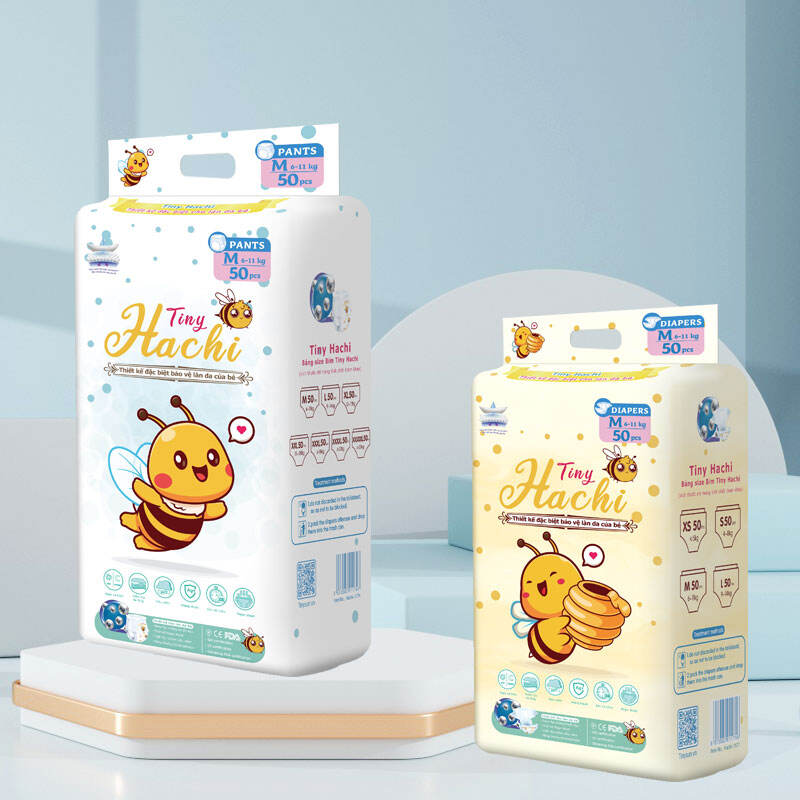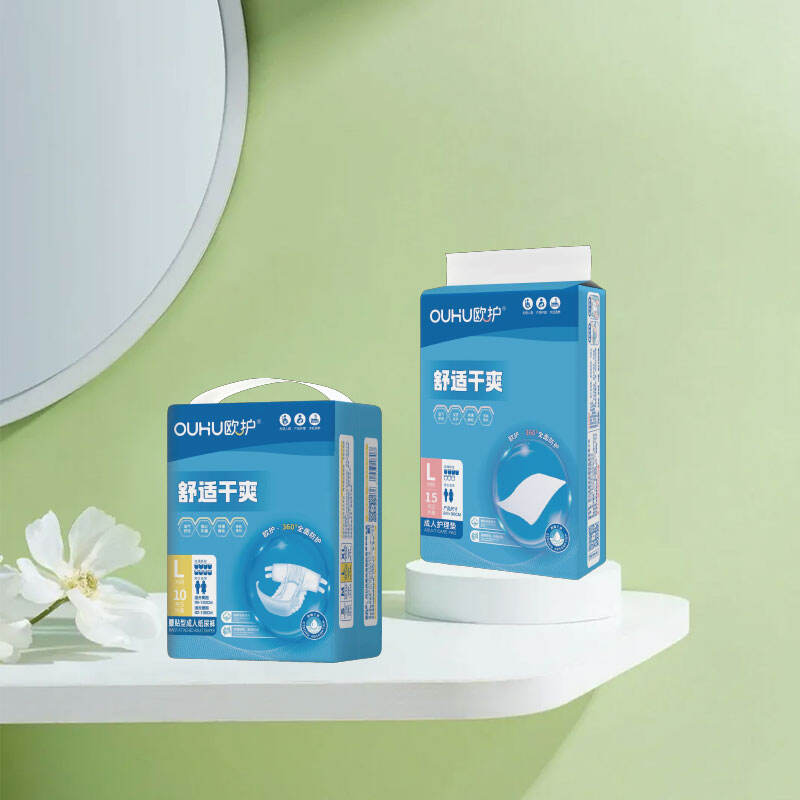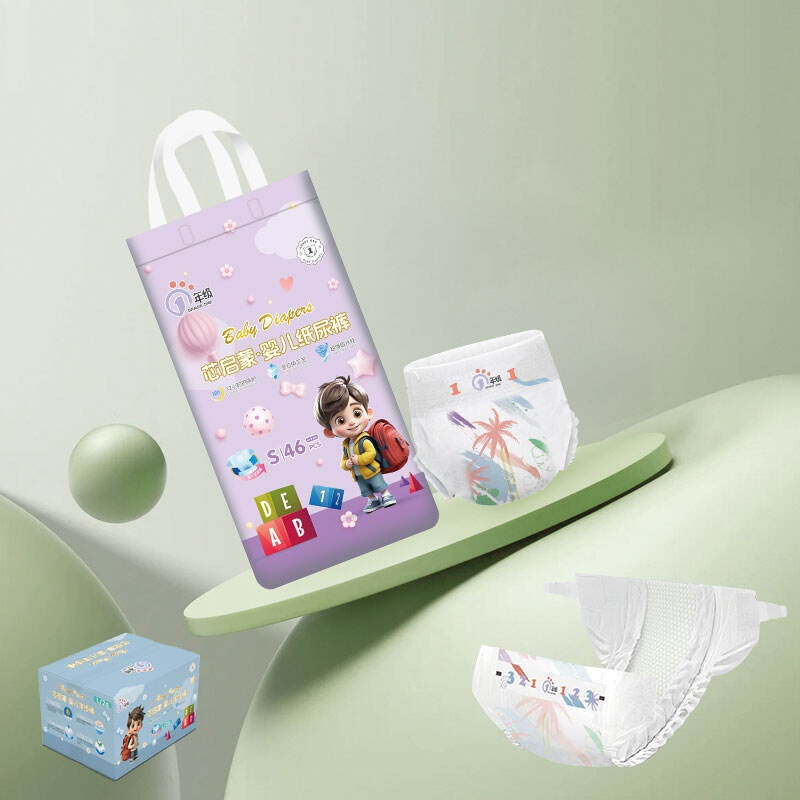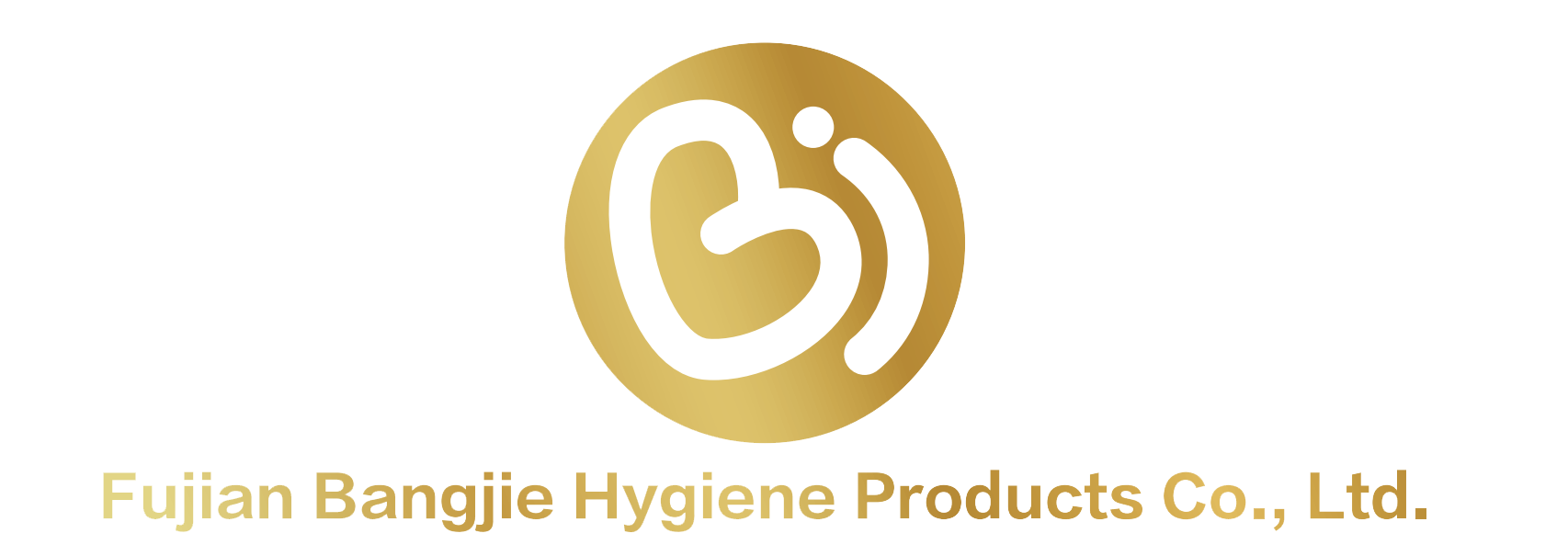Omnichannel မဟာဗျူဟာများ: E-Commerce သည် အထုပ်ရောင်းချမှုကို ဘယ်လိုပြောင်းလဲနေသနည်း
အီလက်ထရောနစ်ကုန်သွယ်မှုသည် ကလေးအဝတ်လျှော်စက်များ ဈေးကွက်တင်ပို့မှုအပေါ် သက်ရောက်မှု
အီလက်ထရောနစ် ကုန်သွယ်မှုက စားသုံးသူဆီ တိုက်ရိုက် လမ်းကြောင်းတွေပေးခြင်းနဲ့ ကိုယ်စီအလိုက် စျေးဝယ်မှု အတွေ့အကြုံတွေ ဖန်တီးခြင်းနဲ့ အဝတ်လျှော်စက် စျေးကွက်ကို တော်လှန်ပြောင်းလဲစေခဲ့တယ်။ ဒီပြောင်းလဲမှုက ကုန်သည်တွေနဲ့ တိုက်ရိုက်ဆက်သွယ်ပြီး ကိုယ်ရေးကိုယ်တာ စျေးဝယ်မှု အတွေ့အကြုံတွေ ပေးရင်း အစဉ်အလာ လက်လီ ဝယ်ယူမှု အတားအဆီးတွေကို ကျော်လွှားဖို့ မိတ်ဖက်တွေကို ခွင့်ပြုတယ်။ ဒီလိုနည်းလမ်းတွေက ယနေ့ ပြိုင်ဆိုင်မှုရှိတဲ့ ဈေးကွက်မှာ အရေးပါတဲ့ ဖောက်သည်တွေရဲ့ သစ္စာရှိမှုနဲ့ အမှတ်တံဆိပ် အသိအမှတ်ပြုမှုကို မြှင့်တင်ပေးပါတယ်။
စက်မှုလုပ်ငန်းက အစီရင်ခံစာတွေက အွန်လိုင်းမှာ အဝတ်လျှော်စက်ရောင်းချမှု တိုးလာတာကို ထောက်ပြပြီး အီးကွန်ရက် ကုန်သွယ်ရေး လမ်းကြောင်းတွေမှာ သိသိသာသာ တိုးလာတာကို ထောက်ပြပါတယ်။ ဥပမာ အွန်လိုင်းဝယ်ယူမှုနှုန်းဟာ လွန်ခဲ့တဲ့ နှစ်အနည်းငယ်အတွင်းမှာ ၁၅% ကျော် တိုးလာခဲ့ရာ ဒစ်ဂျစ်တယ်စျေးဝယ်မှုဆီ ပြောင်းသွားတာကို ပြသနေပါတယ်။ ဒီတိုးတက်မှုက စားသုံးသူတွေရဲ့ အနှစ်သက်မှု ပြောင်းလဲမှုကို သက်သေပြရုံသာမက ဒီဂျီတယ် ဦးတည်ချက်တွေကို လုပ်ငန်းရဲ့ လိုက်လျောညီထွေမှုလည်း ညွှန်ပြပါတယ်။
စားသုံးသူများဆီ ရောက်ရှိမှု အမြင့်ဆုံးဖြစ်အောင် omnichannel နည်းဗျူဟာတွေကို နားလည်ပြီး အကောင်အထည်ဖော်ဖို့ မရှိမဖြစ်လိုအပ်ပါတယ်။ ဒီမဟာဗျူဟာတွေဟာ အွန်လိုင်းနဲ့ အွန်လိုင်းမဟုတ်တဲ့ ရောင်းချမှု လမ်းကြောင်းတွေကို အဆက်မပြတ် ပေါင်းစပ်ပေးပြီး စားသုံးသူတွေရဲ့ အတွေ့အကြုံကို တစ်သမတ်တည်း ဖြစ်စေပါတယ်။ ဒစ်ဂျစ်တယ်နဲ့ ရုပ်ပိုင်း ပလက်ဖောင်း နှစ်ခုစလုံးကို အသုံးချခြင်းအားဖြင့် မိတ်ဖက်တွေဟာ ထိတွေ့မှု နေရာများစွာမှာ စားသုံးသူတွေနဲ့ တုံ့ပြန်ဆက်သွယ်နိုင်ပြီး လုပ်ငန်းရဲ့ အောင်မြင်တဲ့ နမူနာများစွာမှာ ထင်ရှားတဲ့ ပိုမြင့်တဲ့ ထိန်းသိမ်းမှုနှုန်းနဲ့ အရောင်း တိုးပွားမှုဆီ ဦးတည်စေပါတယ်။
အဝတ်လျှော်စက်များ၏ စျေးကွက်တင်ပို့မှုတွင် Omnichannel နည်းဗျူဟာများ တိုးတက်လာ
Omnichannel နည်းဗျူဟာတွေဟာ ခေတ်သစ် အဝတ်လျှော်စက် စျေးကွက်မှာ အရေးပါလာပြီး မိတ်ကပ်တွေဟာ စားသုံးသူတွေနဲ့ ဆက်သွယ်ပုံကို ပြောင်းလဲစေပါတယ်။ ၎င်းတို့ရဲ့ ဗဟိုချက်မှာ ဒီဗျူဟာတွေဟာ မဆိုစလောက် ချိတ်ဆက်ထားတဲ့ စျေးဝယ်မှု အတွေ့အကြုံကို မီဒီယာများစွာမှာ ဖန်တီးဖို့ပါ။ ဖောက်သည်သည်သည် အွန်လိုင်းမှ စျေးဝယ်နေသည်ဖြစ်စေ၊ ဆိုင်တွင်းတွင် ရှာဖွေနေသည်ဖြစ်စေ၊ မိုဘိုင်း အက်ပ်မှတဆင့် ပါဝင်နေသည်ဖြစ်စေ၊ omnichannel နည်းဗျူဟာများက ထိတွေ့မှုတိုင်းဟာ တစ်သမတ်တည်းဖြစ်ကာ အချင်းချင်း ဆက်စပ်နေသည်ကို အာမခံပေးသည်။ ဒီချဉ်းကပ်မှုက အခုခေတ် ပြိုင်ဆိုင်မှုရှိတဲ့ ဈေးကွက်မှာ အပိုဆုတစ်ခုသာ မဟုတ်တော့ဘဲ လိုအပ်ချက်တစ်ခုပါ၊ အဲဒီမှာ သင့်တော်တဲ့ ပေါင်းစည်းမှုမရှိဘဲ ဖောက်သည်အတွေ့အကြုံတွေဟာ တိုးတိုးပြီး ကွဲပြားနေတယ်။
omnichannel နည်းဗျူဟာများ၏ အဓိက အစိတ်အပိုင်းများမှာ ဒေတာ ပေါင်းစည်းခြင်း၊ ဖောက်သည်ဗဟိုပြု ချဉ်းကပ်မှု၊ နည်းပညာ ရင်းနှီးမြှုပ်နှံမှု၊ တစ်သမတ်တည်းသော တံဆိပ်တင်ခြင်းနှင့် တိုင်းတာခြင်းနှင့် ပြင်ဆင်ခြင်းတို့ဖြစ်သည်။ ရှင်းလင်းမှု တိုးတက်စေရန်အတွက် အောက်ပါ အဓိက အချက်များကို စနစ်တကျ စာရင်းပြုစုကြည့်ပါ။
- ဒေတာ ပေါင်းစည်းခြင်း : အဆက်မပြတ် အတွေ့အကြုံအတွက် ဖောက်သည်တွေရဲ့ အမြင်တွေကို ပေါင်းစည်းပေးတယ်။
- ဖောက်သည်ကို ဗဟိုပြုတဲ့ ချဉ်းကပ်မှု : ထိတွေ့မှု နေရာတိုင်းမှာ ဖောက်သည်တွေရဲ့ လိုအပ်ချက်တွေကို ဦးစားပေးပေးတာ သေချာစေတယ်။
- နည်းပညာ ရင်းနှီးမြှုပ်နှံမှု : မဟာလမ်းကြောင်းများကို ပေါင်းစည်း စီမံခန့်ခွဲရန်အတွက် မရှိမဖြစ်လိုအပ်သည်။
- တစ်သမတ်တည်းသော တံဆိပ်နှင့် သတင်းစကား : ပလက်ဖောင်းများအကြားမှာ ညီညွတ်တဲ့ သတင်းစကားတစ်ခု ထိန်းသိမ်းထားတယ်။
- တိုင်းတာခြင်းနှင့် ပြင်ဆင်ခြင်း : စွမ်းဆောင်မှု ဒေတာကို သုံးပြီး မရပ်မနား တိုးတက်မှုရှိစေတယ်။
ဒီအချက်တွေကို ထိရောက်စွာ အကောင်အထည်ဖော်ခြင်းက ပိုကောင်းတဲ့ ဖောက်သည်ကျေနပ်မှုနဲ့ ပိုများတဲ့ အရောင်း ပြောင်းလဲမှုလို အကျိုးကျေးဇူးများစွာရှိပါတယ်။ ဥပမာ၊ Disney ရဲ့ လေ့လာမှုတစ်ခုက စားသုံးသူတွေရဲ့ ပါဝင်မှုကို မြှင့်တင်တဲ့ မှော်ဆန်တဲ့ အတွေ့အကြုံတစ်ခု ဖန်တီးဖို့ ပြသရေး ပန်းခြံတွေ၊ ဝက်ဘ်ဆိုက်တွေနဲ့ မိုဘိုင်း အက်ပ်တွေကို ပေါင်းစပ်ခြင်းရဲ့ စွမ်းအားကို ပြသတယ်။ အလားတူပဲ အဝတ်လျှော်စက်ဈေးကွက်မှာလည်း omnichannel နည်းဗျူဟာတွေကို ကျင့်သုံးတဲ့ တံဆိပ်တွေဟာ မိဘတွေကို သူတို့အကြိုက်ဆုံး ပလက်ဖောင်းတွေအားလုံးမှာ အဆင်ပြေပြီး ဆက်သွယ်ထားတဲ့ စျေးဝယ်မှု အတွေ့အကြုံတစ်ခု ပေးခြင်းအားဖြင့် ပိုမိုကောင်းမွန်တဲ့ သစ္စာရှိမှုနဲ့ ထိန်းသိမ်းမှုကို မျှော်လင့်နိုင်ပါတယ်။
ထုတ်ကုန်ပြပွဲ: အကောင်းဆုံးအဝတ်လျှော်စက်များ
ကလေးများနှင့် လူကြီးများအတွက် လိုအပ်ချက်အမျိုးမျိုးအတွက် အကောင်းဆုံး အဝတ်လျှော်စက် ရွေးချယ်မှုများကို နားလည်ခြင်းက ကလေးများနှင့် လူကြီးများအတွက် သက်တောင့်သက်သာ ဖြစ်စေနိုင်သည်။ ဒီမှာ အပေါ်ဆုံး ရွေးချယ်မှု အချို့ကို ကြည့်ပါ။
သေးငယ်တဲ့ အဝတ်လျှော်စက် အမျိုးအစား / ဘောင်းဘီအမျိုးအစား
အသက် 0-3 နှစ်အရွယ် ကလေးငယ်များအတွက် ဒီဇိုင်းထုတ်ထားသော Tiny Diaper Type / Pants Type သည် သက်တောင့်သက်သာနှင့် အသက်ရှူနိုင်မှုနှင့် တစ်ပြေးညီဖြစ်သည်။ ဒီ unisex အဝတ်လျှော်စက်ဟာ NB ကနေ XXXL အထိရှိတဲ့ အရွယ်အစားတွေနဲ့ ကျစ်လျစ်စွာ လိုက်ဖက်အောင်လုပ်ပေးပြီး အလေးချိန်က 0-23 kg အထိပါ။ ၎င်းမှာ တစ်ကမ္ဘာလုံးသုံးချိန်ရှိပြီး ဆိုလိုတာက Tiny Hachi နဲ့ Tiny Tenshi စီးရီးရဲ့ ယုံကြည်မှုကြောင့် ဘယ်အခမ်းအနားမဆို သင့်တော်တာပါ။ ၎င်း၏ အရေပြားနှင့် မထိခိုက်စေသော ဒီဇိုင်းသည် ကလေးများ၏ နူးညံ့သော အရေပြားအတွက် အကောင်းဆုံးဖြစ်သည်၊ ၎င်းသည် မိဘများအတွက် အကောင်းဆုံးရွေးချယ်မှုဖြစ်သည်
YOUDUN လူကြီးများအတွက် အဝတ်လျှော်စက်
အများဆုံး ကာကွယ်မှုနဲ့ သက်တောင့်သက်သာ ဖြစ်ဖို့ လိုတဲ့ လူကြီးတွေအတွက် YOUDUN လူကြီးများအတွက် အဝတ်လျှော်စက် ၎င်းရဲ့ Stay-dry လုပ်ဆောင်ချက်နဲ့ ထင်ရှားပါတယ်။ Unisex ဒီဇိုင်းသည် မတူညီသောအရွယ်အစားများ (M / L / XL) ကိုပါ ထည့်သွင်းနိုင်ပြီး နေ့စဉ်သုံးရန်အံဝင်ခွင်ကျဖြစ်ပါသည်။ ၎င်းရဲ့ သာယာမှုနှင့် စုပ်ယူမှု မြင့်မားမှုကို ချီးကျူးတဲ့ သက်သေခံချက်တွေနဲ့ ထောက်ခံထားပြီး ယုံကြည်မှုရှိတဲ့ အထောက်အပံ့ လိုအပ်တဲ့ လူကြီးတွေအတွက် အဖြေတစ်ခု ပေးပါတယ်။ OUHU တံဆိပ်အစိတ်အပိုင်းဖြစ်သော YOUDUN စီးရီးသည် အသက်အရွယ်စုံသုံးသူများအတွက် ဂုဏ်သိက္ခာနှင့် ယုံကြည်မှုရှိစေသော လျှို့ဝှက်၊ ထိရောက်သော ထုတ်ကုန်များ ထုတ်လုပ်ခြင်းဖြင့် ကျော်ကြားသည်။
နှစ် အဝတ်လျှော်စက်အမျိုးအစား
နှစ်ပတ်လုံး သက်တောင့်သက်သာ ဖြစ်ဖို့ အထူးပြုလုပ်ထားတဲ့ နှစ် အဝတ်လျှော်စက်အမျိုးအစား ရာသီအလိုက် ပြောင်းလဲမှုတွေနဲ့ အရောင်းပွဲတွေမှာ ပိုများတဲ့ ဝယ်လိုအားကို လိုက်လျောညီထွေ ပြုပြင်ပေးတယ်။ ၎င်းမှာ အသက်ရှူလွယ်ပြီး အရေပြားအတွက် မထိခိုက်စေတဲ့ ဒီဇိုင်းတစ်ခုတည်းနဲ့အတူ အသက် ၀-၃ နှစ်အရွယ် ကလေးတွေအတွက် သက်တောင့်သက်သာ ဖြစ်စေဖို့ ကတိပေးထားပါတယ်။ တစ်နှစ်လုံး မိဘတွေအတွက် အဓိက စားစရာဖြစ်ဖို့ သေချာစေတဲ့ မတူညီတဲ့ လိုအပ်ချက်တွေကို လိုက်ဖက်အောင် ပြုပြင်ပေးပါတယ်။ ရာသီတိုင်းအတွက် သင့်တော်မှုကြောင့် ရာသီအလိုက် တည်ငြိမ်မှုနဲ့ စိတ်ချရမှုကို ရှာဖွေသူတွေအတွက် ဉာဏ်ကောင်းတဲ့ ရွေးချယ်မှုတစ်ခု ဖြစ်လာပါတယ်။
ကလေးအဝတ်လျှော်စက်များအတွက် ဆန်းသစ်တဲ့ စျေးကွက်မိတ်ဖက်ရေး နည်းဗျူဟာများ
ယနေ့ ပြိုင်ဆိုင်မှုရှိတဲ့ စျေးကွက်မှာ ကလေးအဝတ်လျှော်စက်တွေဟာ ဒေတာ ဆန်းစစ်မှုကို အသုံးချပြီး ရည်ရွယ်ချက်ရှိတဲ့ စျေးကွက် မဟာဗျူဟာတွေ ဖန်တီးနိုင်ပါတယ်။ ဆန်းစစ်ရေး ကိရိယာတွေကို သုံးခြင်းအားဖြင့် ကုန်သည်တွေရဲ့ အပြုအမူ၊ ဝယ်ယူမှု ပုံစံတွေနဲ့ အကြိုက်ဆုံးတွေလို တန်ဖိုးမဖြတ်နိုင်တဲ့ အမြင်တွေ ရနိုင်ပါတယ်။ ဒါက သူတို့ရဲ့ စျေးကွက် မဲဆွယ်ပွဲတွေကို ပိုထိရောက်စွာ ညှိနိုင်အောင် လုပ်ပေးပါတယ်။ ဥပမာ ဒေတာ ဆန်းစစ်မှုက လူဦးရေအချို့ကြားမှာ ဘယ်အဝတ်လျှော်စက်အမျိုးအစားက ပိုကြိုက်လဲဆိုတာ ဖော်ပြနိုင်ပြီး တံဆိပ်တွေဟာ သူတို့ရဲ့ အားထုတ်မှုတွေကို အလားအလာအရှိဆုံး စျေးကွက်တွေပေါ်မှာ အာရုံစိုက်ဖို့ အခွင့်ပေးပါတယ်။ ဒီအမြင်တွေကို အသုံးချခြင်းအားဖြင့်၊ တံဆိပ်တွေဟာ သူတို့ရဲ့ စျေးကွက်သုံးစွဲမှုကို အကောင်းမွန်ဆုံး လုပ်နိုင်ကြတယ်၊ ဖောက်သည်တွေရဲ့ ပါဝင်မှုကို မြှင့်တင်နိုင်ကြပြီး နောက်ဆုံးမှာ အရောင်း တိုးတက်မှုကို တွန်းပေးနိုင်ပါတယ်။
အီလက်ထရောနစ်ကုန်သွယ်ရေး မဟာဗျူဟာများနှင့် လူမှုမီဒီယာ ပေါင်းစပ်မှုဟာ ပိုကျယ်ပြန့်သော ပရိတ်သတ်ဆီ ရောက်ရှိရန် ရည်ရွယ်သည့် အဝတ်လျှော်စက်တံဆိပ်များအတွက် ကစားပွဲကို ပြောင်းလဲစေသည်။ Instagram နှင့် Facebook ကဲ့သို့သော ပလက်ဖောင်းများသည် စားသုံးသူများနှင့် အထူးသဖြင့် ဤမီဒီယာများတွင် တက်ကြွသော မိဘငယ်များနှင့် ထိတွေ့ရန် ထူးခြားသော အခွင့်အလမ်းများကို ပေးသည်။ အောင်မြင်တဲ့ လှုံ့ဆော်မှုတွေဟာ မကြာခဏတော့ ပုံပြင်တွေနဲ့ တိုက်ရိုက်စီးဆင်းမှုလို တုံ့ပြန်ဆက်သွယ်တဲ့ အကြောင်းအရာတွေကို အသုံးပြုပြီး ထုတ်ကုန်ရဲ့ လက္ခဏာတွေနဲ့ အကျိုးကျေးဇူးတွေကို ဆွဲဆောင်မှုရှိရှိ ပြသပါတယ်။ မှတ်သားစရာ ဥပမာတစ်ခုက ဖေ့စ်ဘွတ်မှာ လှုံ့ဆော်မှုတစ်ခု စတင်ခဲ့တဲ့ အဝတ်လျှော်စက်တံဆိပ်တစ်ခုဖြစ်ပြီး ဖောက်သည်တွေရဲ့ ကျေနပ်မှုကို အသားပေးဖို့ အသုံးပြုသူဖန်တီးထားတဲ့ အကြောင်းအရာကို အသုံးပြုကာ တံဆိပ် အသိအမှတ်ပြုမှုနဲ့ အွန်လိုင်းရောင်းအား တိုးပွားစေပါတယ်။ လူမှုမီဒီယာတွေကို အီလက်ထရောနစ် ကုန်သွယ်မှုနဲ့ အဆက်မပြတ် ပေါင်းစပ်ခြင်းအားဖြင့်၊ ကြည့်ရှုသူတွေကို ဖောက်သည်တွေအဖြစ် ပြောင်းလဲစေတဲ့ ဆွဲဆောင်မှုရှိတဲ့ စျေးဝယ်မှု အတွေ့အကြုံတွေကို ဖန်တီးနိုင်ပါတယ်။
ကလေးအဝတ်လျှော်စက်များ ဈေးကွက်တင်ခြင်းတွင် စိန်ခေါ်မှုများနှင့် ဖြေရှင်းနည်းများ
ကလေးအဝတ်လျှော်စက်များ၏ စျေးကွက်တင်ပို့မှုသည် စိန်ခေါ်မှုများနှင့် ပြည့်နှက်နေသည်။ အဓိကအားဖြင့် အရည်အသွေး၊ သက်တောင့်သက်သာနှင့် ဈေးနှုန်းများအနီးတွင် ဝန်းရံနေသော အဓိက စားသုံးသူမျှော်လင့်ချက်များကြောင့်ဖြစ်သည်။ မကြာသေးမီက စစ်တမ်းတွေက မိဘ ၈၀% ကျော်ဟာ အသားလျှော်စက်တွေမှာ စုပ်ယူမှုနဲ့ အရေပြားနဲ့ မထိခိုက်စေတာလို အကြောင်းရင်းတွေကို ဦးစားပေးတယ်လို့ ထောက်ပြထားပါတယ်။ ဒီတော့ ထိရောက်တဲ့ စျေးကွက် မဟာဗျူဟာတိုင်းဟာ ဒီအချက်တွေကို အလေးပေးဖို့လိုပါတယ်။ ထို့အပြင် ပြိုင်ဆိုင်နိုင်သော ဈေးနှုန်း သတ်မှတ်ခြင်းသည် အဓိကအချက်တစ်ခုအဖြစ် ကျန်ရှိနေသေးသည်။ စားသုံးသူ ၆၀% ခန့်သည် ဈေးနှုန်း နှိုင်းယှဉ်ခြင်းဖြင့် လွှမ်းမိုးခံရပြီး အရည်အသွေးကို ထိခိုက်စေခြင်းမရှိဘဲ ကုန်ကျစရိတ်ကို ဟန်ချက်ညီစွာ သတ်မှတ်ရန် လိုအပ်ကြောင်း ထင်ရှားစေသည်။
ပြိုင်ဆိုင်မှုပြင်းထန်တဲ့ အီးကွန်ရက် ကုန်သွယ်ရေး နေရာမှာ လမ်းလျှောက်ရာမှာ အဝတ်လျှော်စက် တံဆိပ်တွေဟာ ဆန်းသစ်တဲ့ စျေးကွက်တင်ပို့မှု လုပ်ထုံးလုပ်နည်းတွေကို လက်ခံခြင်းကနေ အကျိုးခံစားနိုင်ပါတယ်။ ထိရောက်တဲ့ ချဉ်းကပ်မှုတစ်ခုက မတူညီတဲ့ ဖောက်သည်ပိုင်းရဲ့ အထူးလိုအပ်ချက်တွေကို အာရုံစိုက်တဲ့ ရည်ရွယ်ချက်ရှိတဲ့ ကြော်ငြာ လှုံ့ဆော်မှုတွေကို အသုံးပြုခြင်းပါ။ ထို့အပြင် ပုဂ္ဂိုလ်ရေးအရ အရောင်းအဝယ်အတွေ့အကြုံများနှင့် အခက်အခဲကင်းရှင်းသော ပြန်ပို့မှုကဲ့သို့သော ဝယ်ယူသူများကို အပြည့်အဝ ဝန်ဆောင်မှုပေးခြင်းတွင် ထူးခြားသော တံဆိပ်များက ထင်ရှားသည်။ မပြတ်သားတဲ့ ဖောက်သည်ခရီးစဉ်တစ်ခု သေချာစေခြင်းအားဖြင့်၊ တံဆိပ်တွေဟာ စားသုံးသူတွေရဲ့ ကျေနပ်မှုကို မြှင့်တင်ရုံသာမက လူစုလူဝေးရှိတဲ့ ဈေးကွက်မှာ ရေရှည် တည်တံ့တဲ့ သစ္စာရှိမှုကိုလည်း တည်ဆောက်ပေးပါတယ်။
အနာဂတ် အဝတ်လျှော်စက်များ ဈေးကွက်ဖော်ထုတ်ရေးအတွက် အဓိက အချက်များ
အနာဂတ် အဝတ်လျှော်စက် စျေးကွက် မဟာဗျူဟာတွေအတွက် တံဆိပ်ကို သစ္စာရှိစေခြင်းဟာ အရေးပါပြီး တံဆိပ်တွေဟာ သစ္စာရှိမှု အစီအစဉ်တွေနဲ့ ရပ်ရွာ ပါဝင်မှုလို ပါဝင်မှု နည်းဗျူဟာတွေကနေ ဒါကို ရယူနိုင်ပါတယ်။ သစ္စာစောင့်ရှောက်မှု အစီအစဉ်တွေက ဝယ်သူတွေကို အမှတ်တွေ (သို့) လျှော့စျေးတွေနဲ့ ဆုလာဘ်ပေးရင်း ထပ်မံဝယ်ယူမှုကို လှုံ့ဆော်တယ်။ ဥပမာ "ဝယ်လိုက် ၁၀ လုံး၊ အခမဲ့ ၁ လုံးရ" အစီအစဉ်ကို ကမ်းလှမ်းခြင်းက စားသုံးသူ ဆက်လက် ပါဝင်မှုကို အားပေးပါတယ်။ တစ်ချိန်တည်းမှာ ဒေသတွင်းပွဲတော်တွေ၊ ပရဟိတအဖွဲ့အစည်းတွေကို ထောက်ပံ့တာလို လူမှုအသိုင်းအဝိုင်း ပါဝင်မှုက မိတ်ဖက်နဲ့ ပိုခိုင်မာတဲ့ စိတ်ပိုင်းဆိုင်ရာ ဆက်သွယ်မှုကို အားပေးပြီး စားသုံးသူတွေရဲ့ ယုံကြည်မှုနဲ့ သစ္စာရှိမှုကို မြှင့်တင်ပေးတယ်။
ထုတ်ကုန်တွေထဲမှာ တည်တံ့မှုနဲ့ ပါဝင်မှုအတွက် စားသုံးသူတွေရဲ့ တောင်းဆိုမှုလည်း တိုးလာနေပါတယ်။ ဒါကို ဖြေရှင်းဖို့ မိတ်ကပ်တွေဟာ ပတ်ဝန်းကျင်နဲ့ မထိခိုက်တဲ့ ပစ္စည်းတွေသုံးခြင်းနဲ့ စျေးကွက်ဖော်ဆောင်မှုတွေမှာ မတူညီတဲ့ ကိုယ်စားလှယ်လောင်းမှုကို အားပေးဖို့လို လုပ်ဆောင်နိုင်တဲ့ ခြေလှမ်းတွေ ချမှတ်နိုင်ပါတယ်။ ပတ်ဝန်းကျင်ကို ဂရုစိုက်တဲ့ စားသုံးသူတွေကို ဆွဲဆောင်ဖို့ တံဆိပ်တစ်ခုဟာ ၎င်းရဲ့ အဝတ်လျှော်စက်တွေမှာ ဇီဝဆွေးမြေ့လွယ်တဲ့ အစိတ်အပိုင်းတွေကို ပြောင်းနိုင်ပြီး ရေရှည်တည်တံ့မှုအတွက် ရည်စူးမှုကို ပြသနိုင်ပါတယ်။ ထို့အပြင် ကြော်ငြာပစ္စည်းများတွင် မတူညီသော မိသားစုများကို ပြသခြင်းက ပါဝင်မှုကို မြှင့်တင်ရုံသာမက ပိုကျယ်ပြန့်သော ပရိတ်သတ်နှင့်လည်း တုံ့ပြန်စေပြီး တံဆိပ်ကို ပိုမိုဆက်နွယ်နိုင်ကာ မတူညီသော လူဦးရေစုများအတွက် ပိုမိုဆွဲဆောင်မှုရှိစေသည်။ ဒီမဟာဗျူဟာတွေကို လက်ခံခြင်းအားဖြင့် အဝတ်လျှော်စက်တံဆိပ်တွေဟာ စားသုံးသူ တန်ဖိုးတွေနဲ့ ပိုကောင်းမွန်စွာ ကိုက်ညီနိုင်ပြီး ယှဉ်ပြိုင်တဲ့ ဈေးကွက်မှာ ခွဲခြားခြားခြားနားနိုင်ပါတယ်။








